What’s the first thing you think of when someone mentions metal? Is it the cutlery you use every day to eat meals with? Or part it plays in the fixtures and fittings of your home? Maybe you think about precious metals like gold, silver, and bronze that are used to create wonderful pieces of jewelry to wear every day…
Of course, metals do provide the basis for many of the things we use in our everyday lives, from cars to cutlery – but there’s a flip side to this particular material and one which we don’t consider often enough. Metal has become the fabrication of choice for some of the world’s most captivating art installations. It has been used, not simply for its practicality and simplicity, but for its beauty and malleability too.
Artists, creatives, and professional metal fabricators work together to bring artistic visions to life. Manipulating materials like bronze, silver, and steel to create works of art that inspire and provide joy to many people.
However, many professional artists aren’t always necessarily experts in engineering techniques, often they’re creatives with a vivid imagination, and they need professional engineers, welders or fabricators to help them realise their dreams, though that’s not always the case.
Some of the artists we’re going to talk about here, in this piece studied metal work or metal sculpture or surrounded themselves with other experts in their field, to learn and gain an insight into the creative processes they went through in order to create their masterpieces.
Here, we’ve put together a list of ten of the world’s most inspiring art installations that have been crafted from metal. There’s something here to inspire everyone, and artists and sculptors for you to perhaps discover for the first time. Why not make a pilgrimage to one or more of the sites?
1. Akdeniz – İlhan Koman
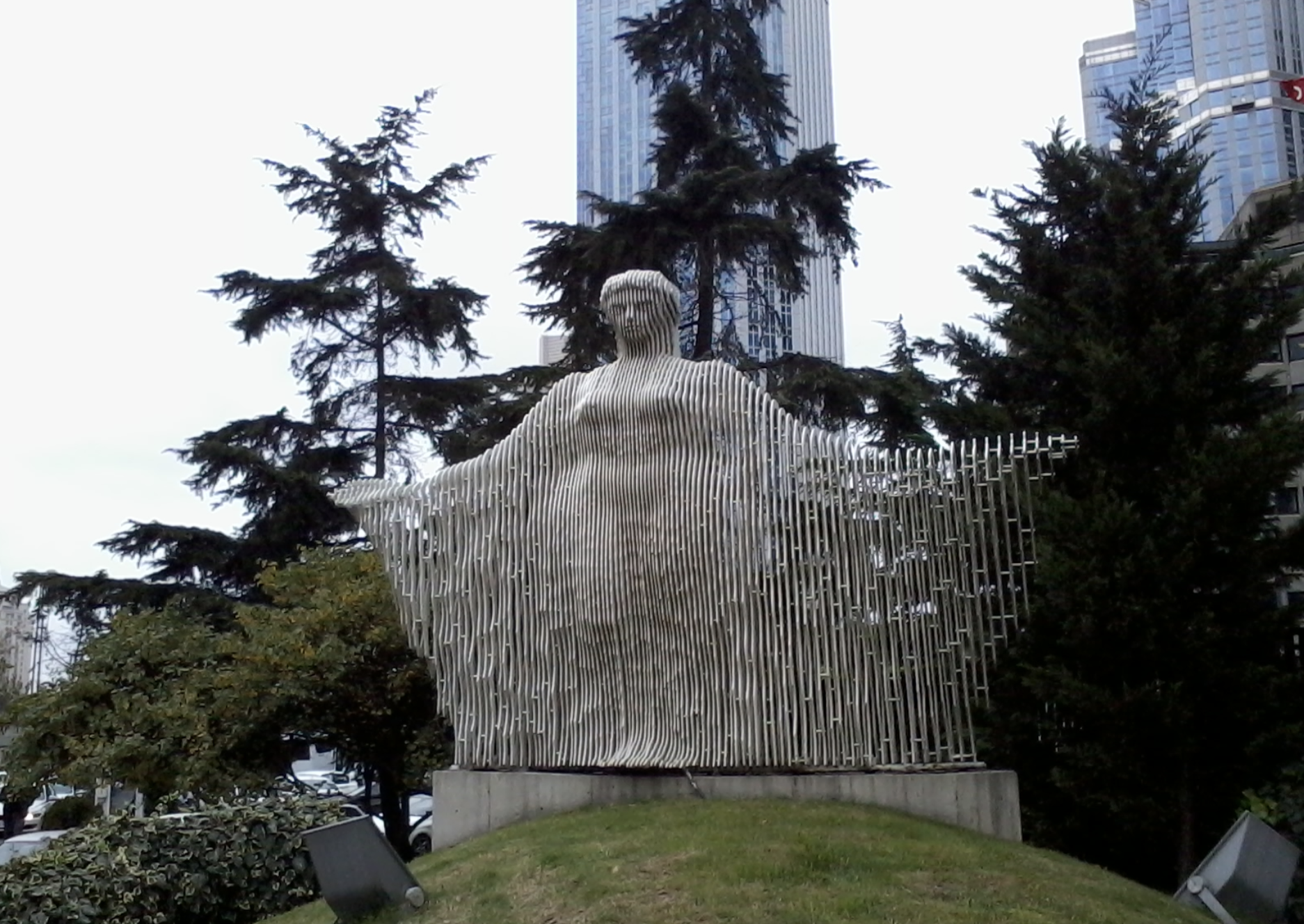
This first example is a work of juxtaposition. Created by Turkish sculptor İlhan Koman in 1980, it was originally situated at Büyükdere Avenue in Levent, Istanbul. Akdeniz is the figure of a woman, standing with open arms.
It was created from one hundred and twelve equally spaced sheet metal strips. Although it was created from metal, the inspiration for the design and work was believed to be from the artist’s desire to create the feeling of a hug.
When Koman thought about what he considered it to be, he thought about the warmth of the Mediterranean sea and that also gave the piece its name Akdeniz, which is what the ocean is known as in Turkiye.
The sculpture’s design is based on the look of an intricate paper cutting and folding technique. It weighs 4.5 tonnes. At the present time, the sculpture is located at the Yapı Kredi Culture Center on İstiklal Avenue.
2. Arcos del Milenio – Sebastien
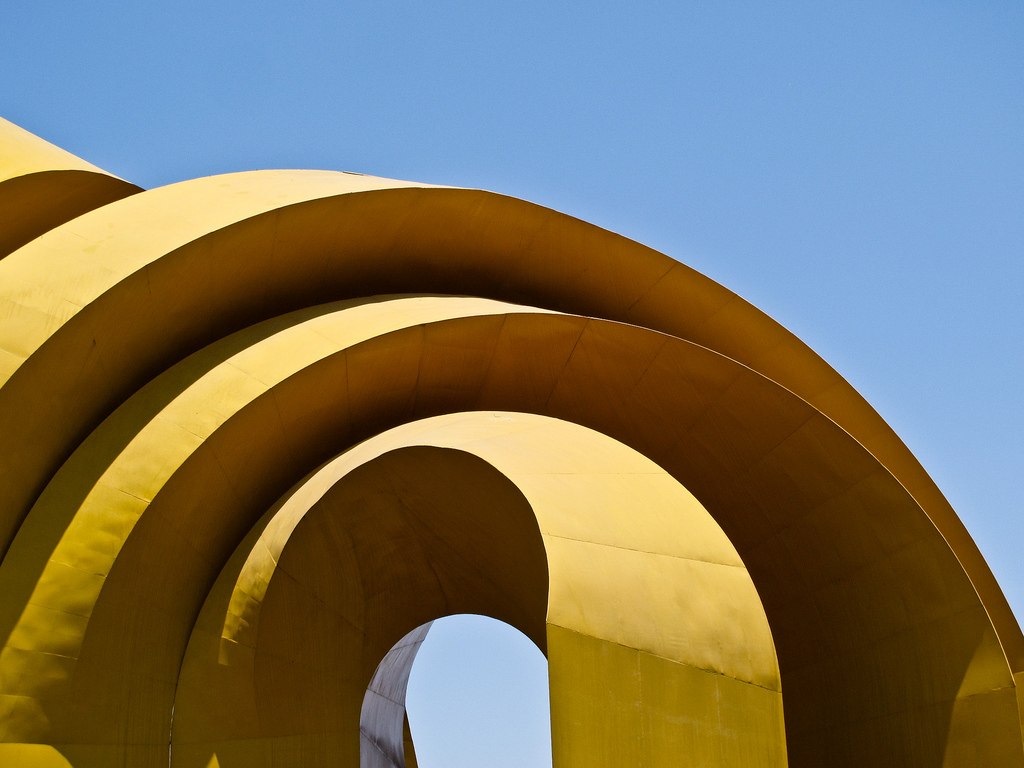
This is something of a slightly controversial sculpture. Called the Arcos del Milenio which translates as the Millennium Arches is a sculpture by Sebastián a Mexican sculptor born in 1947 and renowned for his work in steel and concrete.
Installed in Guadalajara, Jalisco, Mexico the sculpture is situated on the Avenues Mariano Otero and Lázaro Cárdenas. Standing at 52 meters high, it weighs 1500 metric tons and covers 1700 square meters of ground.
It was approved for construction just before the turn of the millennium in 1999 but the work is still incomplete almost twenty-five years later, as it should have six arches and only four of them are complete. This was allegedly because of budget constraints – but there was also some public opposition to the sculpture. Sebastian himself went to seek out private firms and corporations who might give him the funds to complete the work.
In the nearby town of Tapalpa, there is also a smaller complete version of the sculpture. However, the main sculpture itself, although striking and beautiful is often graffitied.
3. Summer Dance – Barbara Hepworth
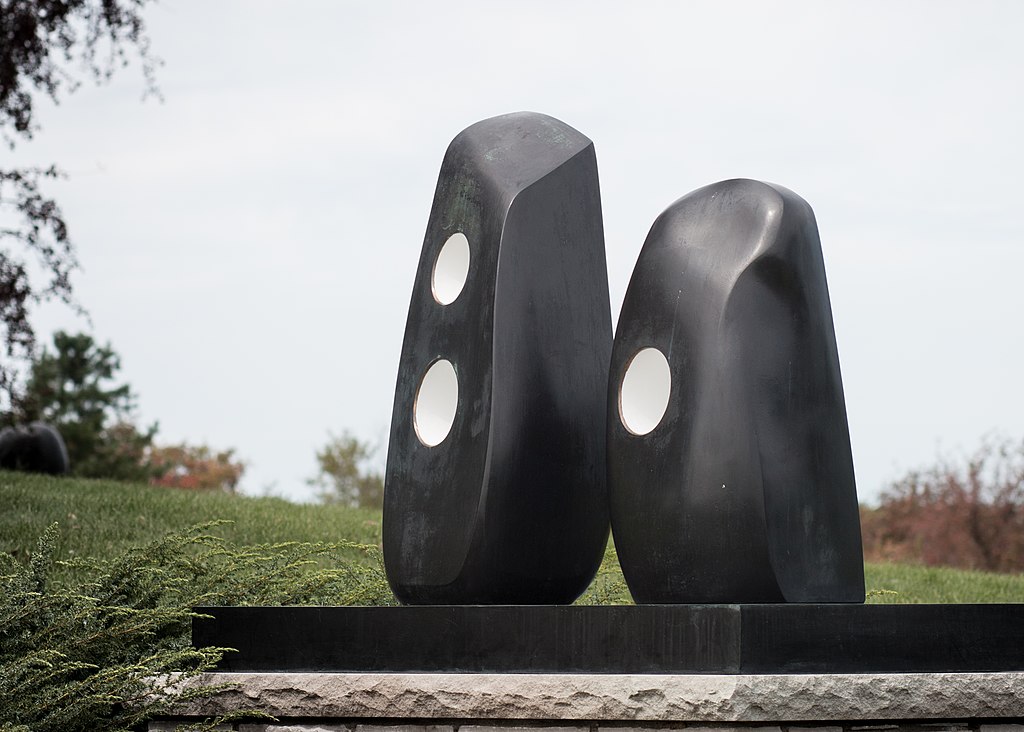
Few artists exemplify modernism as much as Barbara Hepworth, and her sculpture Summer Dance, created firstly in marble in 1971, then in bronze in 1972 shows her love and knowledge of pagan life and ritual.
Of her work, in her book ‘Barbara Hepworth: A Pictorial Autobiography’ she commented,
“The forms which have had special meaning for me since childhood have been the standing form (which is the translation of my feeling towards the human being standing in landscape); the two forms (which is the tender relationship of one living thing beside another); and the closed form, such as the oval, spherical or pierced form (sometimes incorporating colour) which translates for me the association and meaning of gesture in landscape.”
Hepworth cited ancient stone sites in and around Cornwall as being a huge inspiration to her. Summer Dance in both its forms of marble and metal takes a highly stylised, image of a human figure and it takes into consideration Hepworth’s fascination with the relationship between nature and man.
In Summer Dance, Hepworth drew her inspiration from a variety of aesthetic sources, not least from one of her contemporaries, Henry Moore, as well as the organic and elegant stone carvings and bronzes of Brancusi and Arp.
Summer Dance, in its bronze composition, can currently be found at the Harrison Sculpture Garden, Minnesota Landscape Arboretum for viewing.
4. Breyman Brothers Fountain – Unknown Sculptor
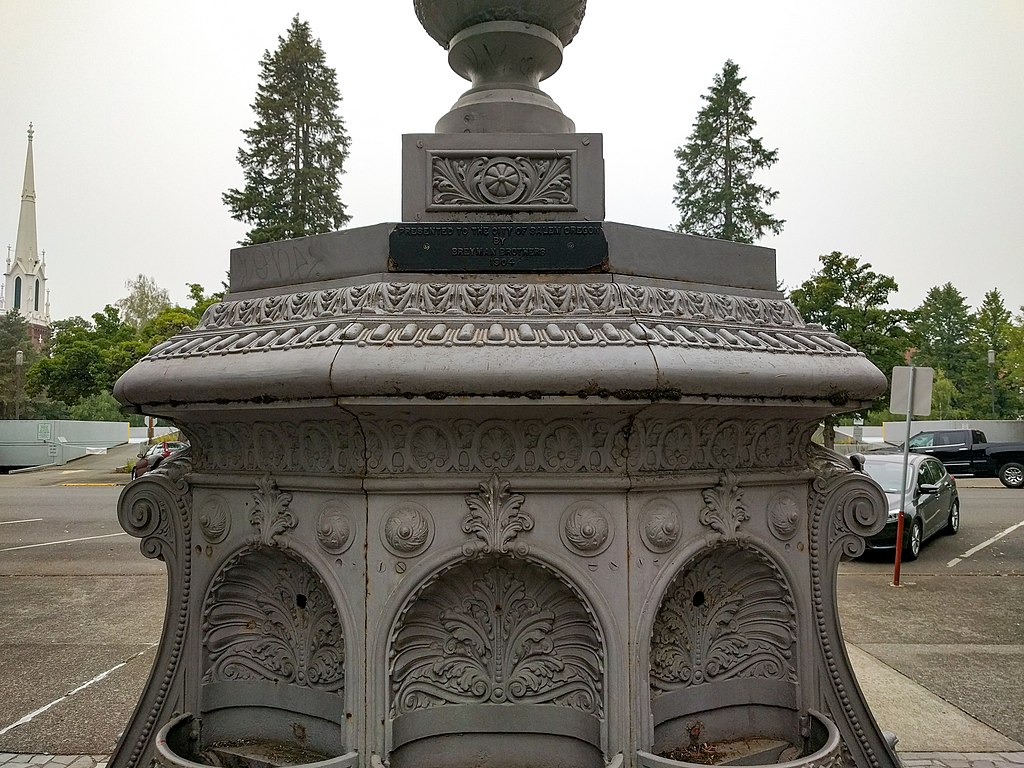
The Breyman Fountain is also known as the Breyman Brothers Fountain (and sometimes as the Breyman Horse Trough) It’s an outdoor fountain and it was created by an unknown sculptor.
It was originally installed in Willson Park in Oregon State Capitol. Made from cast iron, it pre-dates the current State Capitol building – and as one of its names suggests it was once used as a drinking fountain for horses and dogs!
Over the years the fountain, which was donated to the city of Salem by the family of businessman Werner Breyman in 1904 has undergone quite a few cosmetic changes. For instance, in the late 1930s the statute installed at the top of the fountain was taken off, put into storage and later went AWOL. Twenty years later it was replaced by a statute of an eagle.
During World War Two the sculptures that originally surrounded the fountain were melted for scrap.
5. Red Cube – Isamu Noguchi
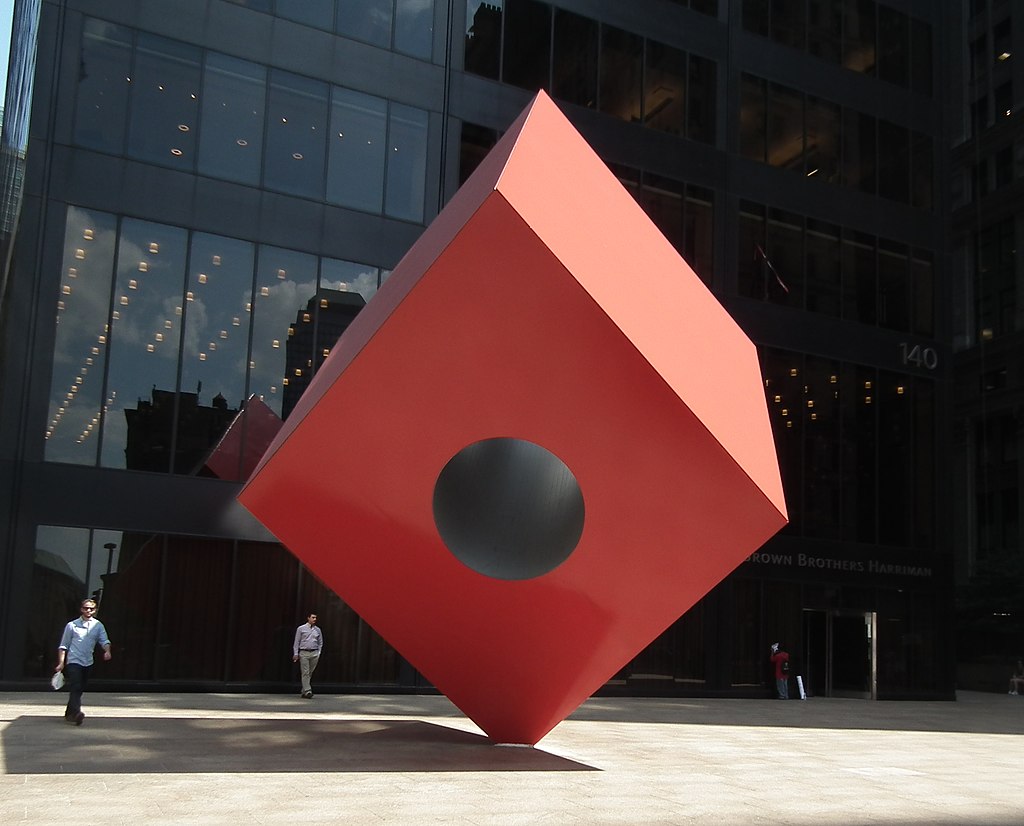
Noguchi’s work Red Cube can be found at 140 Broadway in Lower Manhattan. It’s not like you can miss it! He was considered to be one of the twentieth century’s most important and critically acclaimed sculptors.
Red Cube, constructed in 1968, features prominently against the back of the Brown Brothers Harriman high rise. As you can see though, the sculpture isn’t actually a cube, it’s a distorted shape that looks stretched.
The Red Cube is built from steel and was cast in aluminum and painted red, It’s most notable feature is the hole that runs upward through the center, which reveals the building behind it. When you look at it your eyes are directed to the sky above.
It has often been compared to a rolling die, which is an interesting comparison to make given that it’s been placed in the financial area of Manhattan. Of his creation, Noguchi says: “The cube signifies chance, like the rolling of dice,” Noguchi explained. “The cube is that man-made pile of carbon blocks by which he had learned to stimulate nature’s processes. The cube on its point may be said to contain both earthly square and solar radiance.”
Book a 60-minute demo to see
how eziil mrp solution works for you
6. Black Cover Flat – Anthony Caro
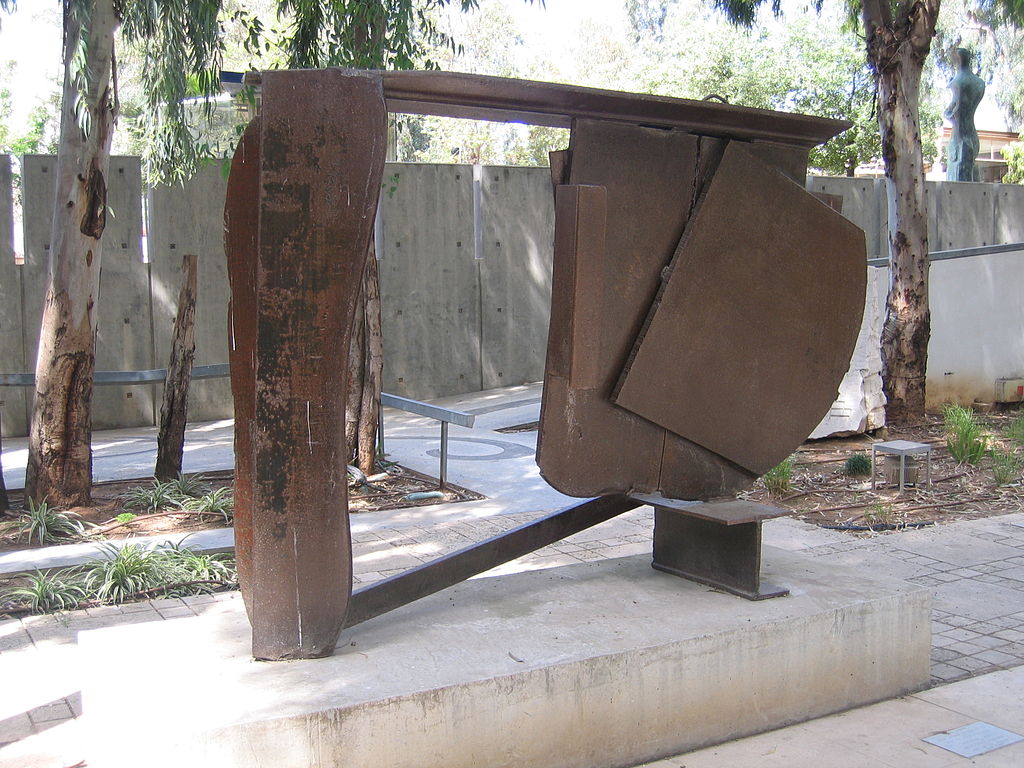
Sir Anthony Alfred Caro was a notable English abstract sculptor whose work is recognizable by its metal constructions that were put together using industrial objects.
Like Hepworth, mentioned earlier in our list, Caro’s style was of the modernist school, and also just like her, he’d worked with Henry Moore early in his career, who was one of his most notable inspirations.
Black Cover Flat is one of his most exciting abstract metal pieces, built in 1974, it’s constructed from steel. It was during this period that Caro started constructing sculptures by welding or bolting together pieces of steel plates and meshes. This particular piece can currently be seen at the Tel Aviv Museum of Art and it has a striking, weathered appearance.
7. Flying Ducks – Tom Hardy
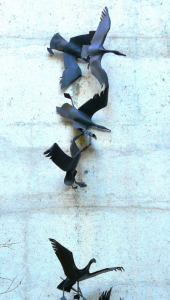 Image courtesy of Wikimedia Commons
Image courtesy of Wikimedia CommonsFlying Ducks is a sculpture by Tom Hardy. There’s some dispute over when it was created – some places state it was constructed in 1970, whilst others believe it was made as late as 1983. That said, it’s beautiful in its elegance, featuring a series of metal ducks captured in flight.
It’s currently installed on the west façade of Lawrence Hall, on the University of Oregon campus, which is in Eugene. It was donated to the School of Architecture and Allied Arts in 1984 by Hugh Klopfenstein and his wife.
Its construction is twenty feet wide and it’s on a base of concrete that measures four feet. It has a striking delicacy about it, but is strong, steady and sturdy.
8. The Four Elements – Alexander Calder
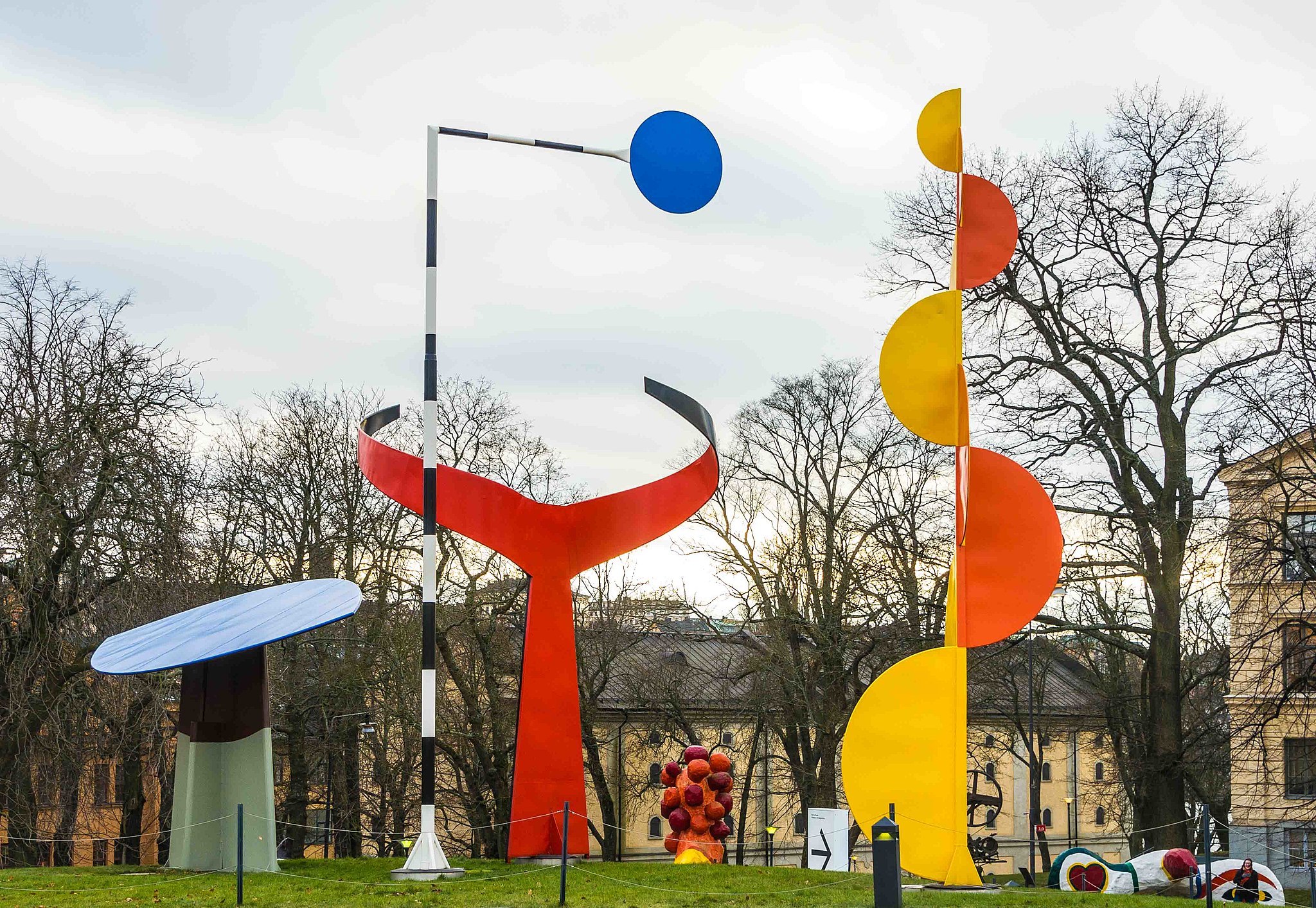
The Four Elements was created by Alexander Calder over sixty years ago, in 1961. It’s notable for inclusion here as it is motorized and constructed of four metal sheets that move.
Presently, it can be seen at the entry to Moderna Museet in Stockholm, Skeppsholmen and it forms part of a long-term installation there. It’s a sincere tribute to Calder and his love for the place.
It stands around thirty feet high and it’s painted in bold, plain colours. The sculpture is based on an original Calder design from pre Second World War in 1938 and it still looks modern, fresh and inspiring to this day.
9. Red Oracle – Hans Van de Bovenkamp
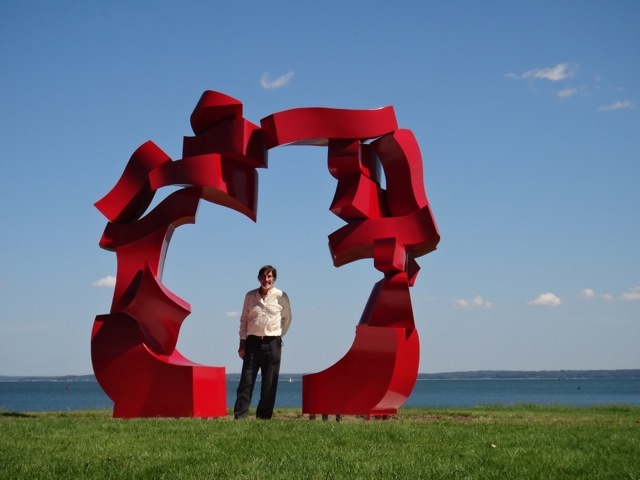
Hans Van de Bovenkamp is a Dutch-born American sculptor, born in 1938 in Holland. He arrived as an immigrant to the USA in 1958 and his career as a sculptor has seen him specialize in large-scale abstract works that are constructed from bronze, stainless steel, painted steel, and aluminum.
Like so many sculptors who work with metal, Van de Bovenkamp’s works are often influenced by myth, symbol, and nature – in the same way Hepworth was, for instance.
Red Oracle is a master class in a fluid design, its bright red colour and bronze construction, a beautiful mastery of form and function and it can be found at the Long Island Sound Portal.
10. Kindred Ties – Evelyn Patricia Terry
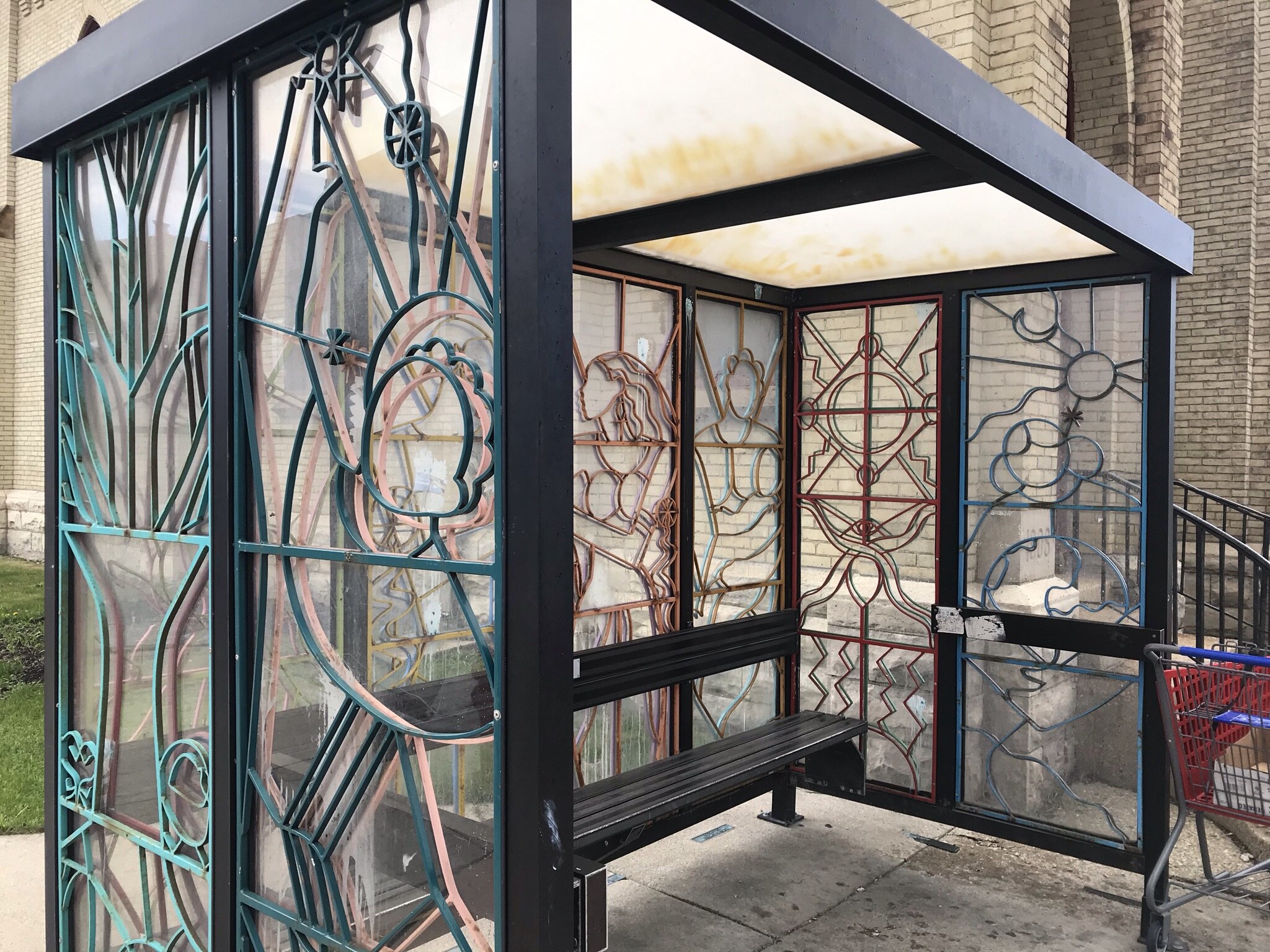
Have you ever seen such a beautiful bus stop in all your life? This exceptional piece, which nods to the art nouveau and deco periods is a work of art meant to be enjoyed by the public and which was created by the sculptor Evelyn Patricia Terry.
It’s located near the intersection of Fond du Lac Avenue, North Avenue, and 21st Street on the north side of Milwaukee, Wisconsin, United States.
The artwork was commissioned by the Spirit of Milwaukee Neighborhood Millennium Art Initiative. Terry created the work in collaboration with a team of local artists and its metal and glass construction is a lesson in elegance and simplicity.
We’ve seen an eclectic mix of styles, materials, and constructions in our journey through these ten important metal art installations, situated throughout the world.
From pieces that are underpinned by the natural world, to sculptures that have a useful purpose and can be appreciated by people in everyday life, our list shows that much joy can be found in metal and that the sculptors associated with these pieces wanted there to be a purpose to them as well as for them to look beautiful, too.